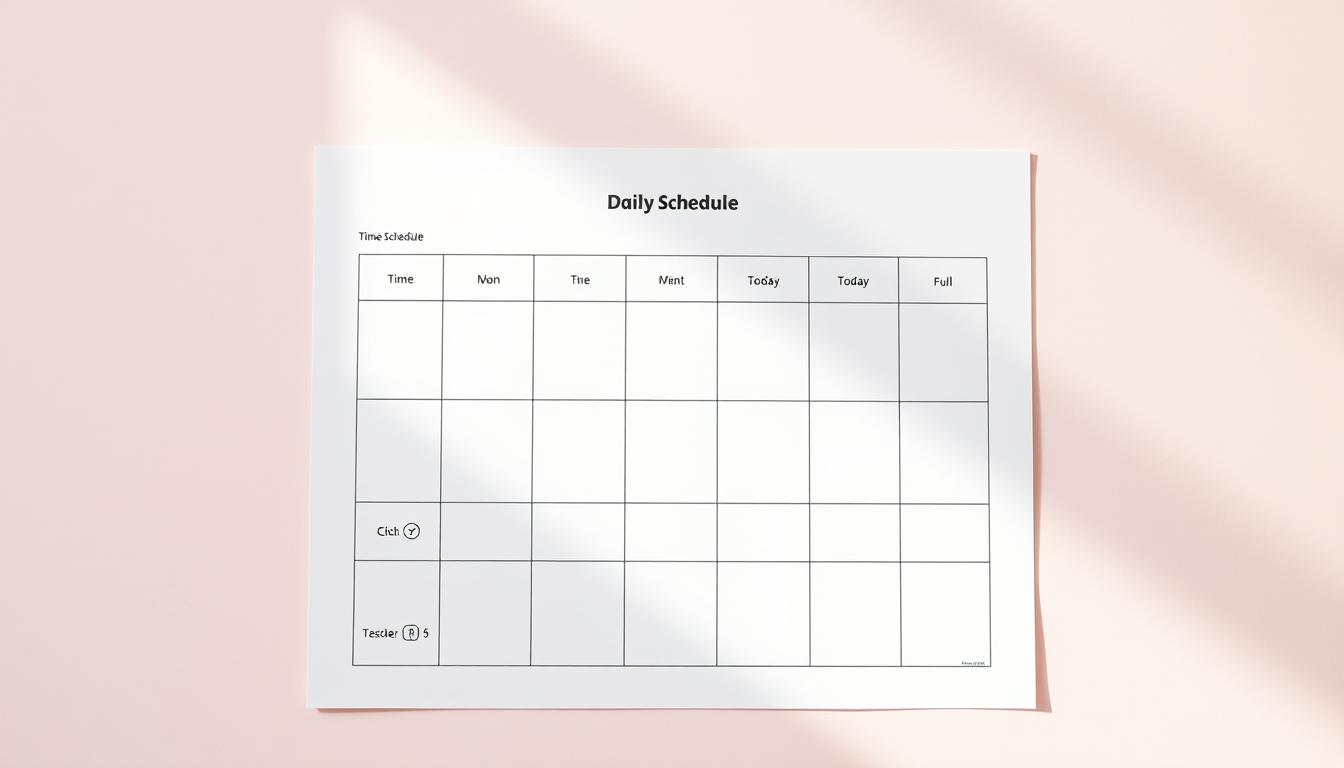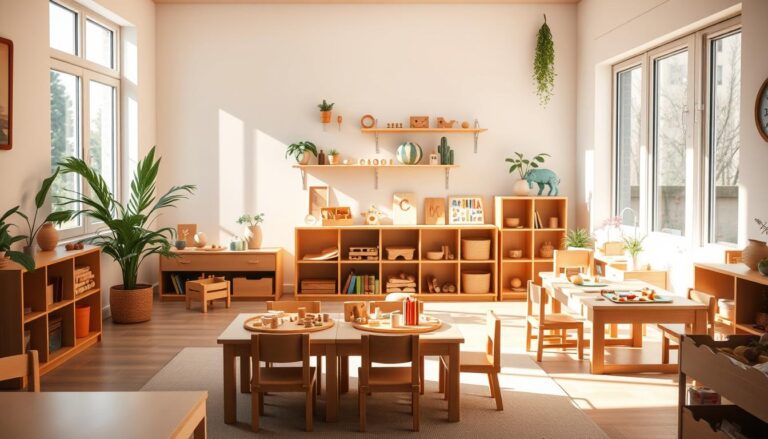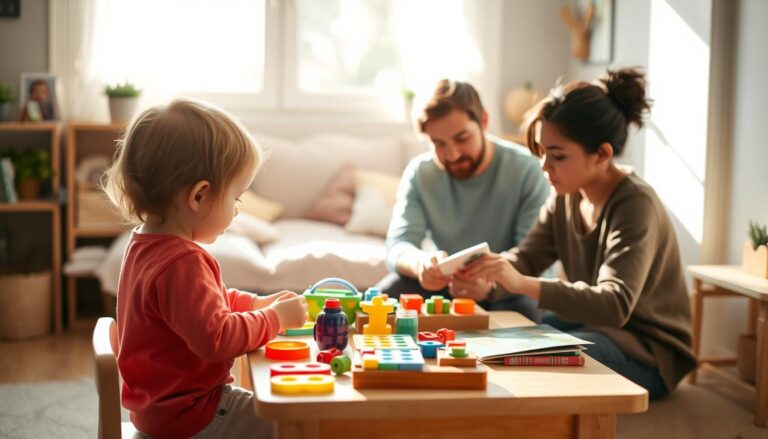Daily Schedule Template for Home Pre-School Success
Ever wondered how a structured day can transform your child’s learning experience? We’ve seen firsthand how a well-planned routine fosters stability, creativity, and growth in young minds. A consistent day not only builds confidence but also creates a rhythm that children naturally thrive on.
Our approach emphasizes flexibility, ensuring the template adapts to your family’s unique needs. From engaging learning activities to creative art projects, we’ve designed a plan that keeps children excited and curious. Starting the day with a visual routine can set a positive tone, helping your child feel secure and ready to explore.
We’ve combined practical experience with proven strategies to create a guide that works. Whether you’re new to this journey or refining your current plan, our step-by-step advice and sample schedules will help you craft a day that balances structure and fun.
Introduction to a Structured Preschool Day
Building a consistent routine lays the foundation for growth. A structured day helps children feel secure, confident, and ready to explore. It’s not just about order; it’s about creating a rhythm that supports their emotional and cognitive development.
Why a Daily Routine Matters for Preschoolers
Routines give children a sense of stability. They know what to expect, which reduces anxiety and builds confidence. For example, starting the day with circle time sets a positive tone. It’s a moment to connect, sing, and review stories together.
Established routines also support learning. Transitions between activities become smoother, and children can focus better. A visual schedule helps everyone stay on track, making the day feel organized and predictable.
Understanding Learning Rhythms and Family Needs
Every family is unique, and so are their needs. Our approach balances structure with flexibility. We introduce routines gradually, starting with simple tasks like morning greetings or story review. This helps children adapt without feeling overwhelmed.
Here’s an example of how a structured day might look:
| Time | Activity |
|---|---|
| 8:00 AM | Morning Circle Time |
| 9:00 AM | Learning Session |
| 10:00 AM | Outdoor Play |
| 11:00 AM | Art and Craft |
This table shows how a steady rhythm can be both engaging and manageable. By incorporating activities like circle time and outdoor play, we create a balanced day that supports growth and creativity.
How to Create a Home Preschool Schedule
Crafting a daily plan tailored to your child’s needs can unlock their potential. A structured routine fosters stability while encouraging creativity and exploration. By designing a schedule that adapts to their pace, you create an environment where learning feels natural and enjoyable.
Designing a Visual Routine for Success
A visual routine helps children understand what to expect, reducing anxiety and keeping them engaged. Use printable schedule cards or charts to outline activities like circle time, play-based math, and art. This approach makes transitions smoother and builds a sense of accomplishment.
Start with simple tasks like morning greetings or storytime. Gradually introduce more activities, ensuring the plan remains flexible. For example, a 30-minute learning session can be followed by hands-on activities like painting or building blocks.
Adapting the Schedule to Your Child’s Learning Pace
Every child learns differently, so it’s essential to adjust the plan as needed. If a lesson feels too challenging, break it into smaller steps. Incorporate activities that match their interests, such as outdoor play or sensory games.
Pre-planning the night before saves time and ensures a smooth day. Use resources like this guide to create a balanced routine. Remember, flexibility is key—adapt the schedule as your child grows and their needs change.
By combining structure with creativity, you can design a plan that supports your child’s development while keeping them excited to learn.
Choosing Activities and Learning Blocks for Preschool Success
The right blend of activities can spark curiosity and growth. By combining structured learning with playful exploration, we create a day that’s both engaging and educational. This approach ensures children stay excited while developing essential skills.
Incorporating Circle Time and Storytelling
Circle time is a cornerstone of a successful routine. It’s a moment to connect, review the day’s theme, and discuss the weather or calendar. Adding storytelling builds language and listening skills, making it a powerful tool for early development.
Books are a great way to introduce new concepts. Choose stories that align with your child’s interests or the day’s theme. This not only enhances vocabulary but also fosters a love for reading.
Balancing Free Play and Hands-On Learning
Free play encourages creativity and independence. It’s a time for children to explore their interests, whether through building blocks or imaginative games. Pair this with hands-on activities like crafts or puzzles to develop fine motor skills.
STEM challenges, such as simple science experiments, add an element of discovery. These activities teach problem-solving and critical thinking in a fun way. Rotating tasks weekly keeps things fresh and maintains interest.
For more ideas, explore our online learning program, which offers a variety of engaging activities tailored to young learners.
Tips for Maintaining a Productive Daily Schedule
Keeping a daily routine productive can feel challenging, but with the right strategies, it’s achievable. A structured plan helps children stay focused while allowing flexibility for unexpected changes. Here’s how to ensure your day runs smoothly and efficiently.
Pre-planning and Night-Before Preparations
Preparation is key to a successful day. Spend a few minutes each evening organizing activities and materials. This saves time in the morning and reduces stress. For example, set out supplies for lessons or prepare healthy snacks in advance.
Creating a checklist can help you stay organized. Include tasks like reviewing the next day’s plan and gathering resources. This ensures you’re ready to start the day without delays.
Utilizing Printables and Technology for Visual Reminders
Visual aids are powerful tools for keeping children on track. Use printable schedules or digital apps to outline the day’s activities. This helps children understand what to expect and reduces anxiety during transitions.
Here’s a sample schedule to guide you:
| Time | Activity |
|---|---|
| 8:00 AM | Morning Circle |
| 9:00 AM | Math Lesson |
| 10:00 AM | Snack Break |
| 10:30 AM | Free Play |
Incorporate rest periods to keep energy levels balanced. Short breaks between activities allow children to recharge and stay engaged.
Flexibility is essential. If a lesson runs longer than planned, adjust the schedule accordingly. This ensures the day remains productive without feeling rushed.
By combining preparation with visual reminders, you can create a routine that supports both learning and well-being.
Conclusion
A well-structured day can bring clarity and joy to your child’s learning journey. By maintaining a consistent routine, you create a sense of order that helps them feel secure and confident. Every child is unique, so flexibility is key to adapting the plan to their needs.
From visual schedules to hands-on activities, we’ve shared methods to keep your child engaged and excited. Small, consistent adjustments can make a big difference over time. Balancing play and structured learning ensures a day that’s both productive and fun.
We encourage you to implement these strategies and adapt them to your family’s style. Share your experiences and join our community for more tips on fostering growth and creativity in your child’s daily routine.







